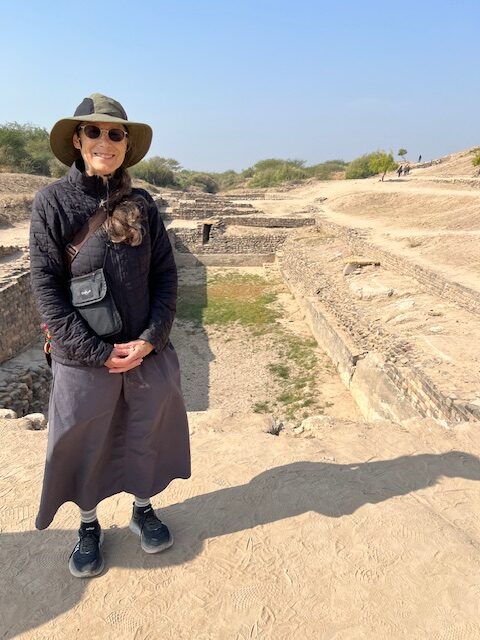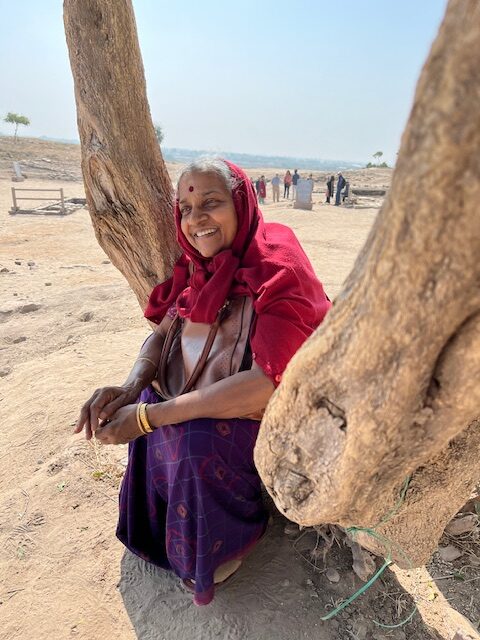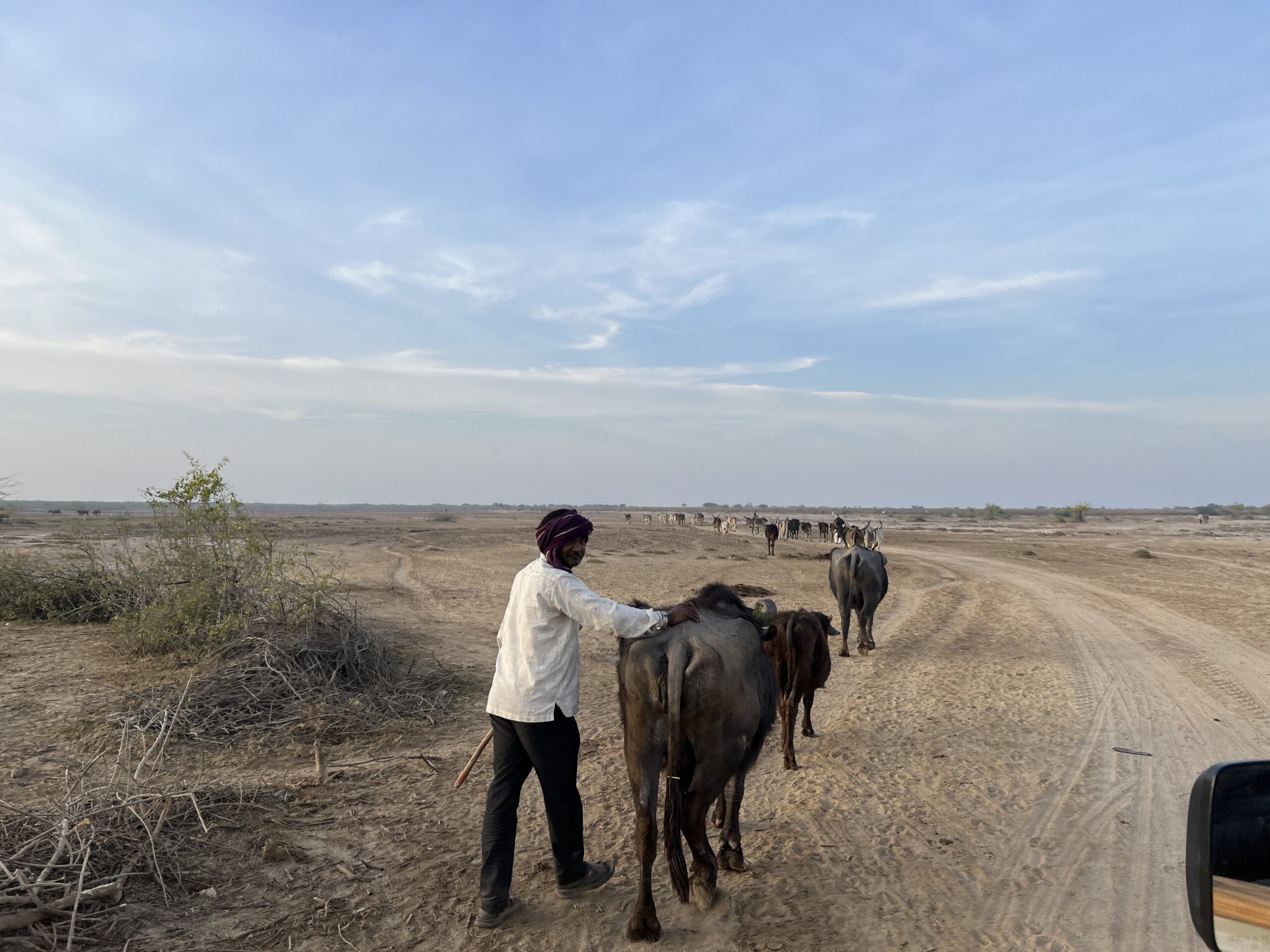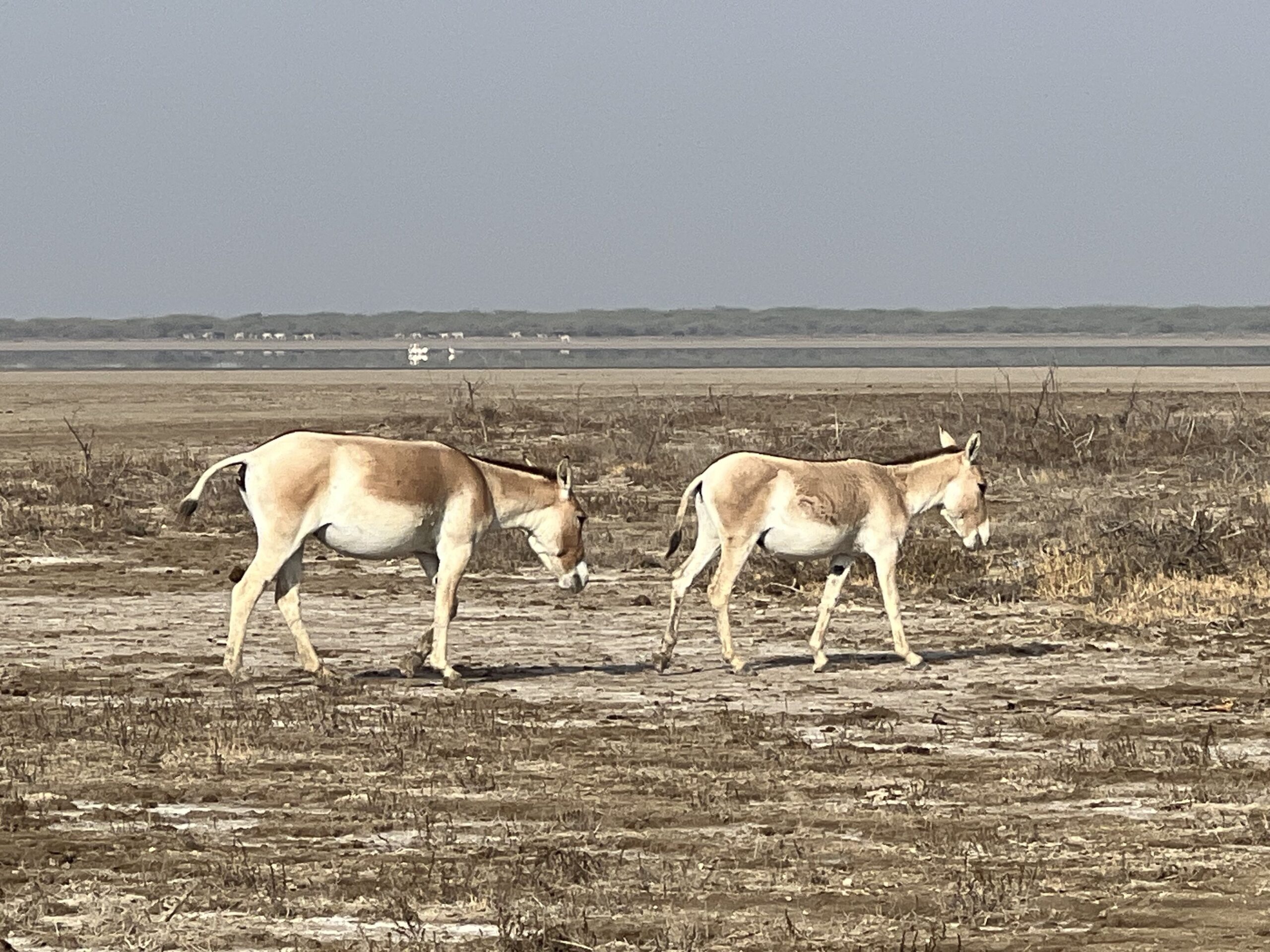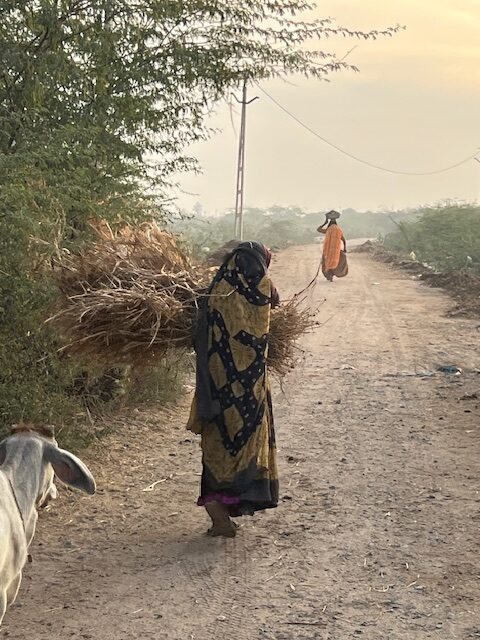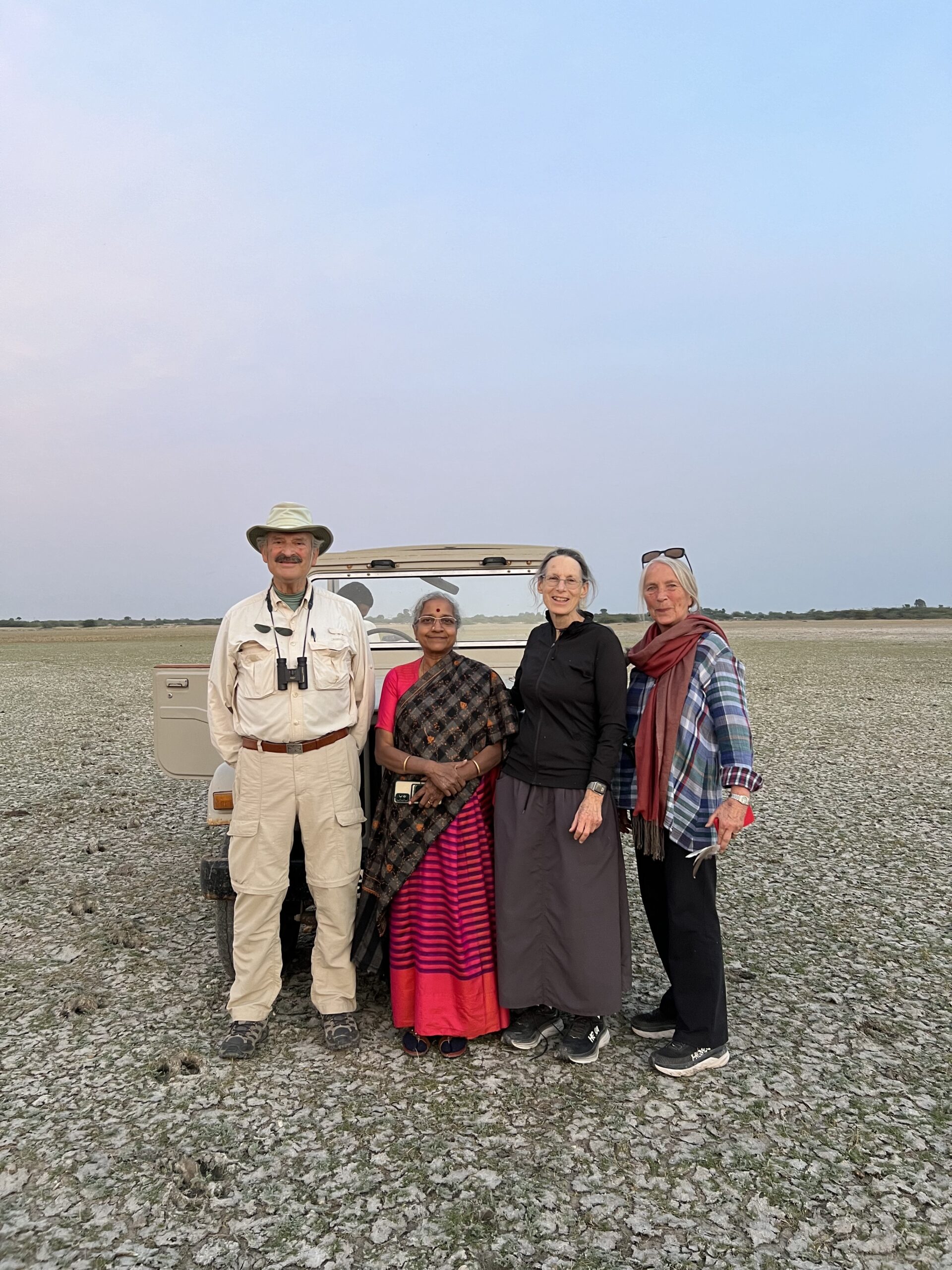January 26, India Republic Day
The known dates of Indus Valley culture is approximately 3000 BC-1500 BC and a number of settlements of similar culture have been found at the land at the top of the Arabian Sea in an area now encompassing both Pakistan and India. Mohenjo-daro, is now in Pakistan, the first and foremost archeological exploration of the Harappan civilization but it was not until 1967 that the site of Dholavira was discovered and excavated through 2005.
Now we are here after an interesting ride along a very long man-made causeway between two salt pans. They are both lakes right now for part of their length and will flood higher in the monsoons and then dissipate into dry caked salt in the summer heat. The causeway is a one track road but because it is Republic Day and a 3-day holiday, there are crowds of people parking along the way to either dip their toes in the saltwater or to walk on the sheets of salt on the drier areas. There are also trucks, animals and motorcycles vying for space to drive and pass. We see a flock of white and grey flamingos along the shore, not yet pink from their diet.
Dholavira is a much more extensive archaeological site than I expected: excavations of a complex series of water reservoirs, a “bailey”, which is an outer wall of a castle, the foundations of a fortified citadel and a large open space used for the recreational games of the day with homes along the side. The history reflects a large complex community which overtime decreased in size and for a period was abandoned, at least in part due to large earthquakes in the area. We walk around with a large number of local people due to the holiday, with good signage in English and Gujarati at the sites. There were simply no English speaking guides available so we decided to follow the crowds and learn what we can along the way. We also learn snippets of the history from Gayathri who listens in to passing guides.
The world being what it is, I connect with my daughter on WhatsApp video and show her the excavations. A word about technology use here: every one seems to pay by scanning a UPI code and paying through Google pay. Cash is less used than in the US.
We continue to encounter great herds of goats and bullock cows along our way in the Kutch region. Long lines of bullock cows on the larger highways and on the smaller roads — herders leading their flocks to or from their feeding areas, one way in the morning and the other at evening time. The cows all have horns, some living in shepherded groups and some wandering around randomly on their own through both urban and rural landscapes. The numbers of goats are even greater, black, white, brown, wandering everywhere. It is amazing that more animals aren’t killed on the roadways. We don’t know whether or when the goats are slaughtered but goats milk does not appear on menus which makes me think their milk is for feeding babies, human consumption by their owners, and finally food for Muslim families. I asked a herdsman at one small village we stopped at and he replied that when the goats are old, they are killed and cooked for the whole community to share together. They can live about 20 years and we learned the age of several of them by the herdsman opening the goats mouths in front of us and looking at their teeth.
We pass through a small city and are able to buy much-missed bananas hanging on a roadside cart. Bananas were not imported into the remote village area we were recently in. Then we are out of the desert and into green farmland. We are now riding at the end of the day toward tonights destination in a rural area outside the town of Dasada. All round us are the 4 main crops of the area in well kept fields: castor oil plants, cumin, mustard seeds and cotton. Life is hopefully easier here.
January 27
We are now at Rann Riders, an up-scale safari resort near the government sanctuary park for Wild Asses, yes that is correct — a cross between a horse and a donkey but a species, unlike those in the U.S., that can propagate.
Our rooms are large, beautiful, and modern, very different from the round huts in Hodka Village and much appreciated. We also meet our new guide tonight who seems thoughtful although I do often have to ask him to repeat words. Our tour operator has done a good job under last-minute circumstances to find us a guide for the remainder of our trip.
Early in the morning at 7:15 AM we climb into our open-air four-wheel drive vehicle, with benches facing each other in the back, and it is cold as the wind whips around us heading out of town. Our morning “safari” and late afternoon “safari” are in fact not dissimilar to those in Africa, with the driver heading off the road onto the dried salt bed to get us close to the “blue cow” and the wild asses as well as many kind of birds.
The Merlin App I have for bird identification works beautifully even taking photos from very far away — and the identification I am given usually matches those from our naturalist guide. For the bird enthusiasts, the birds we have seen include:Great Spotted Eagle, White Painted Stork, March Harrier, Siberian Crane (which migrates every year between Gujarat and Siberia), White Spoonbill, iridescent Kingfisher, Ruddy Shell Duck, Gray Leg Goose, Red Necked Ibis, Snowy Egret, an owl, pelicans, cranes of various sorts, and large number of both the Lesser Flamingo and Greater Flamingo on the shallow water.
In the afternoon we also went to several villages: these villages seemed much poorer to us than those in the Kutch area. One of them was a migratory community that moved with their goats between Gujarat and Maharashtra with the men doing odd jobs. The other was a small village with an “old” woman of the Rabbari group who was known to be one of the last to continue a certain tradition of embroidery. We sat and talked to her as she sewed, through our interpreters, and found out that she was 60 years old. We also were told that Rabbari could only marry within their own community. If someone married to a person from an outside group, their family was fined a huge sum and the girl had to move back. In this village, as others, the women are still carrying large bundles of firewood on their heads as part of life. I see young girls with incredibly erect spines doing the same, obviously a skill learned from a very early age.
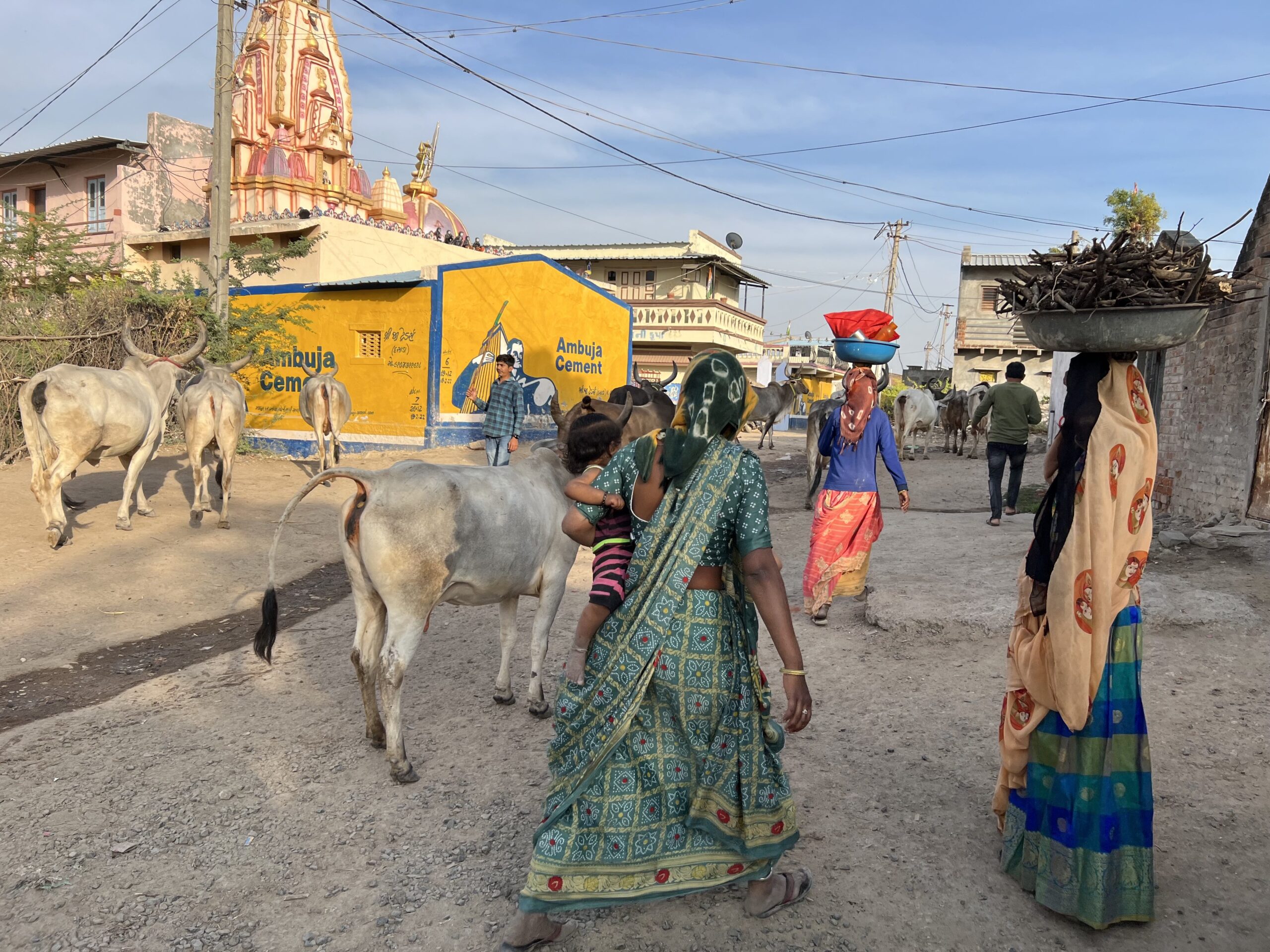
We are in the village at 5 pm just when all the herders are bringing their cows back into the compound and it seems like the cows peel off and know just where they need to go to get back to their owners. There is one big bull at the end of the group among perhaps 50 cows.
I will repeat here something I think I said earlier that the distinction between Muslims and Hindus in this part of India seems very blurry and not of great import to the functioning of the society. Everyone must stay within their own group but there seems little obvious tension between the two. Of course, I don’t know what is really going on but when I have asked about the composition of inhabitants in various places we have stopped, there doesn’t seem much emphasis or concern about the religion.
In the morning I walk around the Rann Riders property for the first time and find a very large swimming pool next to a skeet shooting range (the owner’s son is number 1 in India and assumed to be on their Olympic team), and a very large equestrian ring and stable which originally held 25 horses but is now down to 5, as well as 3 swimming pools. Our stay here was memorable, from the pink sunrise to the even more pink sunset over the salt flats.

